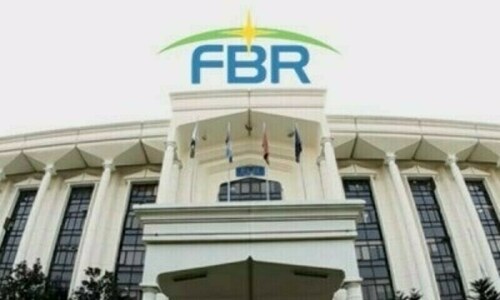FBR Updates Post Clearance & Internal Audit Functions
The Federal Board of Revenue (FBR) has introduced revisions to the operational scope and authority of the Directorate General of Post Clearance Audit and Internal Audit.
The FBR formalized these changes through the issuance of S.R.0.1655 (I)/2025 on Monday.
According to the official statement, the FBR has announced the restructuring, roles, and jurisdiction of the Directorate General of Post Clearance Audit and Internal Audit, along with its Directorates, focusing on post-release activities.
The directors overseeing the Directorate General of Post Clearance Audit in Karachi, Lahore, Islamabad, and Quetta will also exercise powers and functions as outlined in the updated directives.
Officials within Post Clearance Audit (PCA) and Internal Audit (IA) will be authorized to develop a National Customs Audit Strategy (NCAS) that encompasses both post-clearance and internal audit processes, based on risk assessments aligned with the goals of customs compliance and facilitation.
PCA and IA personnel will also be responsible for review and quality assurance. A consistent nationwide protocol for selection, execution, observation, review, appeals, hearings, finalization, and record maintenance will be implemented to ensure a transparent and precise audit procedure.
Audit feedback will be shared with field offices and the Directorate of Risk Management to enhance compliance management strategies.
A Data Analytics Center (DAC) will be established within the PCA-IA framework to leverage the expertise of technical specialists from the public and private sectors. This includes data analysts, data scientists, system specialists, AI experts, and statistical experts.
The DAC will serve as the primary hub for consolidating data from all pertinent sources, including internal systems like WeBOC, PSW, valuation databases, exemption certificates, seizure records, and previous audit outcomes. It will also incorporate data from other government bodies such as OGAs, SECP, IRS, the State Bank, the Ministry of Commerce, and commercial data sources like market prices, shipping manifests, and global trade databases.
The DAC will create and implement procedures to refine and standardize inconsistent data to assure reliability for analysis. Furthermore, it will construct and continuously improve statistical and machine learning models based on risk indicators to pinpoint high-risk importers, exporters, and transactions.
The DAC will employ methods such as network analysis to uncover patterns indicative of misrepresentation. This includes undervaluation or overvaluation relative to comparable goods, incorrect classification to secure lower duty rates, fraudulent origin claims to capitalize on trade agreements, and schemes intended to claim unjustified refunds or rebates. It will also perform horizontal analyses of specific sectors or risk categories to detect systemic non-compliance and oversee the application of sophisticated analytics software and technology to improve the efficiency of PCA-IA.
A centralized Audit Management Cell (AMC) will be integrated within PCA-IA to manage the implementation of the annual audit plan, incorporating inputs from DAC and other entities; develop, revise, and refine robust risk-based selection criteria for audits while avoiding duplication; and maintain computerized records of audits and consolidate audit reports from all PCA-IA Directorates.
The Director General will determine the jurisdiction of concurrent audit cases, if any, as well as legacy matters.
In the event of an entity-based post-clearance audit of any unit, importer, or exporter, the PCA-IA Directorates will have shared jurisdiction, irrespective of where the goods were cleared across the country.
The Director General will assign functions of the Audit Management Cell and Data Analytics Centre to Additional Directors, Deputy/Assistant Directors, contract workers, and other Customs officers as deemed necessary.
Audits will be executed following international best practices and in accordance with guidelines from the World Trade Organization and World Customs Organization.
This notification is scheduled to take effect on August 30th, 2025.



Comments (0)
No comments yet. Be the first to comment!
Leave a Comment